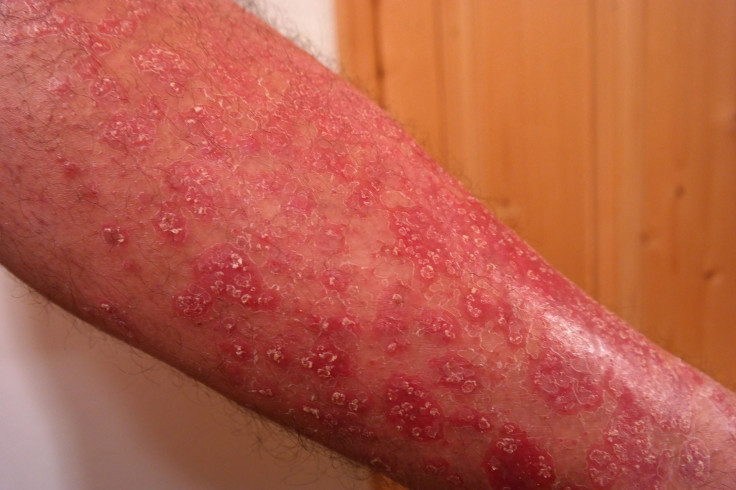Plaque Psoriasis Symptoms: What To Know About The Painful Skin Condition

You want your skin to look young, but not that young — otherwise it’s going to be itchy and painful.
That’s exactly what happens in people with plaque psoriasis. The National Institute of Arthritis and Musculoskeletal and Skin Diseases explains that new skin cells typically take about a month to cycle to the surface of the skin, but with psoriasis “skin cells quickly rise from their origin below the surface of the skin and pile up on the surface before they have a chance to mature,” perhaps within only a few days’ time. That rush of immature cells makes for patches of inflamed skin, known as plaques, that look covered in silvery scales. And they can appear all over: joints, legs, face, abdomen, scalp, palms, genitals, inside the mouth, on the nails or any place else.
Those plaques, which vary in size, can crack and bleed, the Mayo Clinic says, or cause other symptoms like stiff joints, or burning or thickened nails. And as a chronic condition, psoriasis can come and go in cycles, “flaring for a few weeks or months, then subsiding for a time or even going into complete remission.” Factors like stress, infections, certain medications or even weather could cause flares.
NIAMS puts the number of people with psoriasis at 6.7 million U.S. adults. In those people, usually a type of white blood cell called T cells, which are supposed to fight off infection, are overactive and “trigger other immune responses, which lead to inflammation and to rapid turnover of skin cells.” There are different forms of the skin condition, but plaque psoriasis is the most common kind. It may interfere with quality of life — the itching and pain associated with the plaques could interfere with sleeping and walking or other basic functions, and the skin’s appearance can cause psychological distress in people who feel self-conscious about it.
According to the National Psoriasis Foundation, however, treatments are available, such as creams that slow cell growth and reduce inflammation,; exposing the skin to ultraviolet light; and prescription drugs.
Published by Medicaldaily.com



























